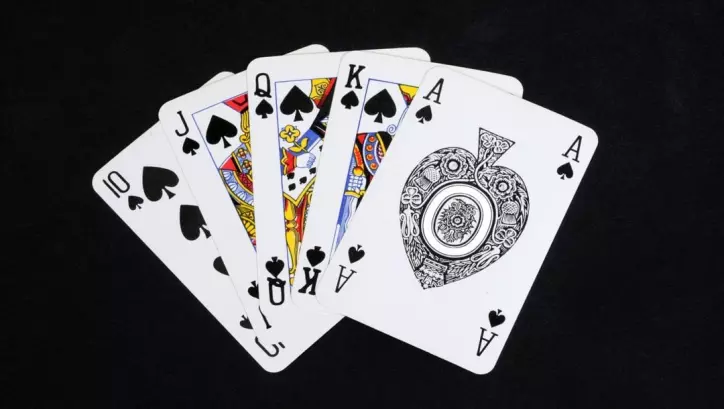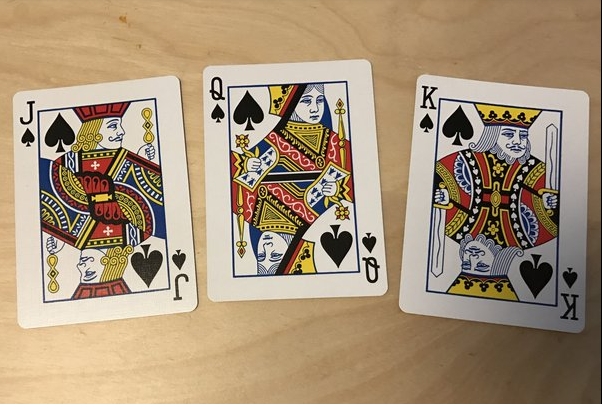In the realm of poker, or any game for that matter, it is imperative to grasp the significance of card values. Whether you find yourself in a physical casino or indulging in online casino gaming from the comfort of your own home, comprehending the relative strength of each card is of paramount importance.
In the context of poker, skill and strategy hold even more weight. While luck might suffice in other casino endeavors, poker demands a different approach. Owing to their significance, face cards are an indispensable component of any poker strategy, regardless of the specific variant you engage in.
This article serves as your comprehensive resource to acquire all the essential knowledge about face cards.
Exploring Face Cards:
Most variations of poker utilize a standard deck of playing cards, consisting of 52 cards distributed across four suits: spades, clubs, hearts, and diamonds, each identified by a distinctive symbol. Spades and clubs are typically black, while diamonds and hearts are colored red. Some of the top online poker platforms employ a four-color deck for easier differentiation.
Face cards, often referred to as “royal” or “court” cards, encompass the jacks, queens, and kings. They are readily identifiable by featuring the visage of royal court members. Traditional playing cards showcase intricately designed face cards to set them apart.
Within each suit, there is one of each face card, totaling 12 in the deck. This includes one queen of hearts, one king of clubs, and so forth. Apart from the four aces, face cards carry the highest value.
It’s worth noting that while jokers are not commonly used in most online poker tournaments, they are still categorized as face cards when they come into play.
The Historical Evolution of Playing Cards:
Tracing the origins of playing cards and determining their age precisely proves to be a challenging endeavor. Nevertheless, most experts concur that the earliest playing cards emerged in China during the Tang Dynasty, approximately in the 9th century, following the advent of woodblock printing technology.
These early playing cards served dual purposes, being employed both in games and as a form of currency. The symbols and characters depicted on the cards signified their respective ranks and values, and cards won in games could be redeemed and traded.
Over the centuries, these cards journeyed through the Middle East and Egypt before eventually arriving in Europe. Records of playing cards date back to as early as 1371 in Spain. Cards became a common pastime for both nobility and common folk, and given the historical prevalence of gambling, it was inevitable that cards would be used for wagering as well.
The suits and symbols on playing cards have undergone significant variations throughout history, including cups, coins, sticks, swords, and roses. However, the classic French deck has become the standard, particularly when playing poker games online.
The Emergence of Double-Headed Cards:
One distinctive feature of playing cards is their double-headed design, ensuring that regardless of a player’s orientation at the table, the cards remain easily readable. Face cards never appear upside down because the top and bottom halves of the figure are mirror images. While this characteristic is taken for granted today, it represents a relatively recent development in the history of playing cards.
Double-headed face cards have significantly enhanced card usability, reducing issues related to card reading. This style became prevalent in the mid-19th century, and today, it is a rarity to encounter cards that lack this double-headed feature, even in online casino settings.
Impact of Face Cards on Poker:
Face cards hold a substantial influence on the game of poker, affecting strategies, decisions, and outcomes. Their high value often dictates the course of play and can make or break a hand. Understanding how to wield these powerful assets is key to mastering the complexities of poker.

While every card in the deck holds significance in the game of poker, some wield a more substantial influence on the game’s outcome. Face cards, in particular, prove invaluable as they contribute to the formation of stronger poker hands.
The prominence of face cards frequently shapes player behavior. This presents an opportunity for you to employ strategic deception, commonly known as bluffing, whenever these face cards make an appearance on the communal board. Vigilantly observe your adversaries for behavioral cues, often referred to as “tells,” which might offer insights into their reactions when face cards are in play. Detecting such poker tells becomes more challenging in online gameplay, but it remains achievable.
Poker Hand Rankings
Face cards are esteemed for a valid reason – their elevated rank leads to the creation of more formidable poker hands. This is why players are less inclined to fold when they possess face cards in their hole cards. Simply put, the inherent strength of face cards empowers poker hands.
Here’s a breakdown of the primary Texas Hold’em poker hand rankings, arranged from the most potent to the least:
1.Straight flush.
2.Four of a kind.
3.Full house.
4.Flush.
5.Straight.
6.Three of a kind.
7.Two pair.
8.Pair.
9.High card.
However, the situation isn’t entirely straightforward. For example, when two players both hold a pair, the decisive factor is the individual card values. The player with the higher-ranked pair claims the pot. For instance, a pair of queens prevails over a pair of nines.
Since face cards possess elevated rankings compared to other cards in the deck, they exert a considerable influence on the game’s outcomes. A prime example of this is evident in the case of a flush, which constitutes any five cards of the same suit.
Suppose four diamonds appear on the communal board, for instance. In such a scenario, multiple players could conceivably hold a flush. If you’re holding the king of diamonds, you can feel confident, as only the ace can outmatch your hand. Conversely, if your flush lacks any face cards, your prospects of prevailing are notably diminished.


